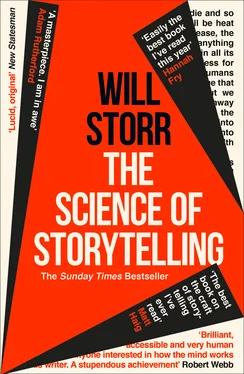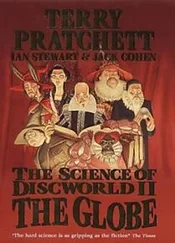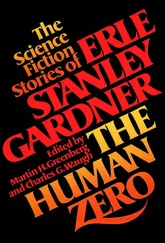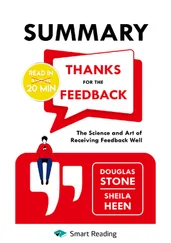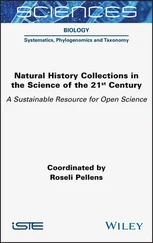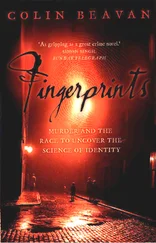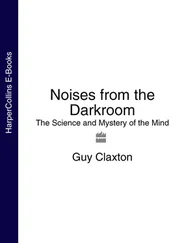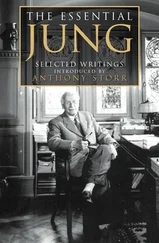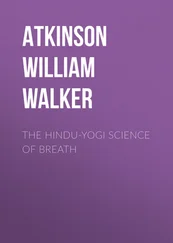In The God of Small Things , Arundhati Roy uses metaphorical language to sensual effect when describing a love scene between the characters Ammu and Valutha: ‘She could feel herself through him. Her skin. The way her body existed only where he touched her. The rest of her was smoke.’
And here the eighteenth-century writer and critic Denis Diderot uses a one-two of perfectly contrasting similes to smack his point home: ‘Libertines are hideous spiders, that often catch pretty butterflies.’
Metaphor and simile can be used to create mood. In Karl Ove Knausgaard’s A Death in the Family , the narrator describes stepping outside for a cigarette break, in the midst of clearing out the house of his recently deceased father. There he sees, ‘plastic bottles lying on their sides on the brick floor dotted with raindrops. The bottlenecks reminded me of muzzles, as if they were small cannons with their barrels pointing in all directions.’ Knausgaard’s choice of language adds to the general deathly, angry aura of the passage by flicking unexpectedly at the reader’s models of guns.
Descriptive masters such as Charles Dickens manage to hit our associative models again and again, creating wonderful crescendos of meaning, with the use of extended metaphors. Here he is, at the peak of his powers, introducing us to Ebenezer Scrooge in A Christmas Carol .
The cold within him froze his old features, nipped his pointed nose, shrivelled his cheek, stiffened his gait; made his eyes red, his thin lips blue; and spoke out shrewdly in his grating voice. A frosty rime was on his head, and on his eyebrows, and his wiry chin. He carried his own low temperature always about with him; he iced his office in the dog-days; and didn’t thaw it one degree at Christmas. External heat and cold had little influence on Scrooge. No warmth could warm, nor wintry weather chill him. No wind that blew was bitterer than he, no falling snow was more intent upon its purpose, no pelting rain less open to entreaty.
The author and journalist George Orwell knew the recipe for a potent metaphor. In the totalitarian milieu of his novel Nineteen Eighty-Four , he describes the small room in which the protagonist Winston and his partner Julia could be themselves without the state spying on them as ‘a world, a pocket of the past where extinct animals could walk.’
It won’t come as much of a surprise to discover the interminably correct Orwell was even right when he wrote about writing. ‘A newly invented metaphor assists thought by evoking a visual image,’ he suggested, in 1946, before warning against the use of that ‘huge dump of worn-out metaphors which have lost all evocative power and are merely used because they save people the trouble of inventing phrases for themselves.’
Researchers recently tested this idea that clichéd metaphors become ‘worn-out’ by overuse. They scanned people reading sentences that included action-based metaphors (‘they grasped the idea’), some of which were well-worn and others fresh. ‘The more familiar the expression, the less it activated the motor system,’ writes the neuroscientist Professor Benjamin Bergen. ‘In other words, over their careers, metaphorical expressions come to be less and less vivid, less vibrant, at least as measured by how much they drive metaphorical simulations.’
In a classic 1932 experiment, the psychologist Frederic Bartlett read a traditional Native American story to participants and asked them to retell it, by memory, at various intervals. The War of the Ghosts was a brief, 330-word tale about a boy who was reluctantly compelled to join a war party. During the battle, a warrior warned the boy that he had been shot. But, looking down, the boy couldn’t see any wounds on his body. The boy concluded that all the warriors were actually just ghosts. The next morning the boy’s face contorted, something black came out of his mouth, and he dropped down dead.
The War of the Ghosts had various characteristics that were unusual, at least for the study’s English participants. When they recalled the tale over time, Bartlett found their brains did something interesting. They simplified and formalised the story, making it more familiar by altering much of its ‘surprising, jerky and inconsequential’ qualities. They removed bits, added other bits and reordered still more. ‘Whenever anything appeared incomprehensible, it was either omitted or explained,’ in much the same way that an editor might fix a confusing story.
Turning the confusing and random into a comprehensible story is an essential function of the storytelling brain. We’re surrounded by a tumult of often chaotic information. In order to help us feel in control, brains radically simplify the world with narrative. Estimates vary, but it’s believed the brain processes around 11 million bits of information at any given moment, but makes us consciously aware of no more than forty. The brain sorts through an abundance of information and decides what salient information to include in its stream of consciousness.
There’s a chance you’ve been made aware of these processes when, in a crowded room, you’ve suddenly heard someone in a distant corner speaking your name. This experience suggests the brain’s been monitoring myriad conversations and has decided to alert you to the one that might prove salient to your wellbeing. It’s constructing your story for you: sifting through the confusion of information that surrounds you, and showing you only what counts. This use of narrative to simplify the complex is also true of memory. Human memory is ‘episodic’ (we tend to experience our messy pasts as a highly simplified sequences of causes and effects) and ‘autobiographical’ (those connected episodes are imbued with personal and moral meaning).
No single part of the brain is responsible for such story making. While most areas have specialisms, brain activity is far more dispersed than scientists once thought. That said, we wouldn’t be the storytellers we are if it wasn’t for its most recently evolved region, the neocortex. It’s a thin layer, about the depth of a shirt collar, folded in such a way that fully three feet of it is packed into a layer beneath your forehead. One of its critical jobs is keeping track of our social worlds. It helps interpret physical gestures, facial expressions and supports theory of mind.
But the neocortex is more than just a people-processor. It’s also responsible for complex thought, including planning, reasoning and making lateral connections. When the psychologist Professor Timothy Wilson writes that one of the main differences between us and other animals is that we have a brain that’s expert at constructing ‘elaborate theories and explanations about what is happening in the world and why,’ he’s talking principally about the neocortex.
These theories and explanations often take the form of stories. One of the earliest we know of tells of a bear being chased by three hunters. The bear is hit. It bleeds over the leaves on the forest floor, leaving behind it the colours of autumn, then manages to escape by climbing up a mountain and leaping into the sky, where it becomes the constellation Ursa Major. Versions of the ‘Cosmic Hunt’ myth have been found in Ancient Greece, northern Europe, Siberia, and in the Americas, where this particular one was told by the Iroquois Indians. Because of this pattern of spread, it’s believed it was being told when there was a land bridge between what’s now Alaska and Russia. That dates it between 13,000 and 28,000 BC.
The Cosmic Hunt myth reads like a classic piece of human bullshit. Perhaps it originated in a dream or shamanistic vision. But, just as likely, it started when someone, at some point, asked someone else, ‘Hey, why do those stars look like a bear?’ And that person gave a sage-like sigh, leaned on a branch and said, ‘Well, it’s funny you should ask …’ And here we are, 20,000 years later, still telling it.
Читать дальше
